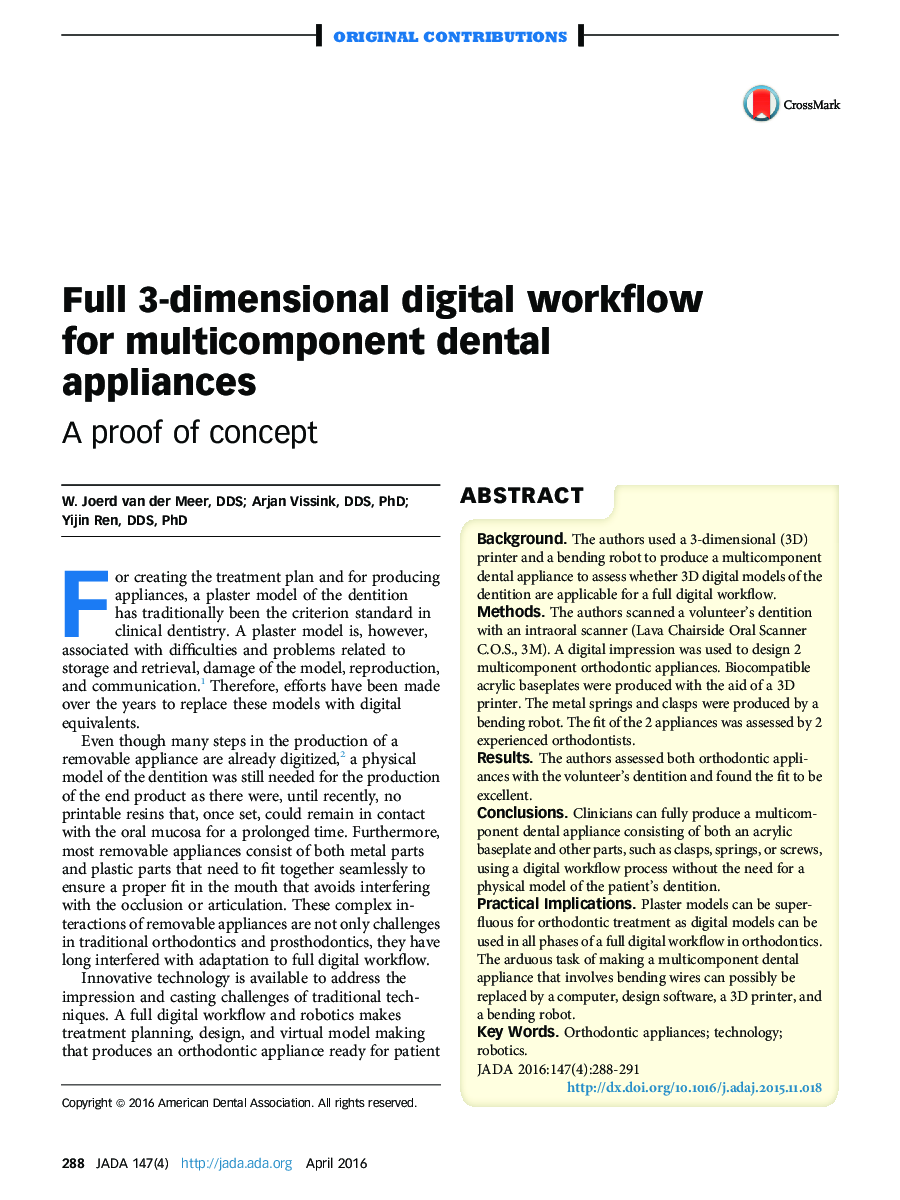| Article ID | Journal | Published Year | Pages | File Type |
|---|---|---|---|---|
| 3136363 | The Journal of the American Dental Association | 2016 | 4 Pages |
BackgroundThe authors used a 3-dimensional (3D) printer and a bending robot to produce a multicomponent dental appliance to assess whether 3D digital models of the dentition are applicable for a full digital workflow.MethodsThe authors scanned a volunteer’s dentition with an intraoral scanner (Lava Chairside Oral Scanner C.O.S., 3M). A digital impression was used to design 2 multicomponent orthodontic appliances. Biocompatible acrylic baseplates were produced with the aid of a 3D printer. The metal springs and clasps were produced by a bending robot. The fit of the 2 appliances was assessed by 2 experienced orthodontists.ResultsThe authors assessed both orthodontic appliances with the volunteer’s dentition and found the fit to be excellent.ConclusionsClinicians can fully produce a multicomponent dental appliance consisting of both an acrylic baseplate and other parts, such as clasps, springs, or screws, using a digital workflow process without the need for a physical model of the patient’s dentition.Practical ImplicationsPlaster models can be superfluous for orthodontic treatment as digital models can be used in all phases of a full digital workflow in orthodontics. The arduous task of making a multicomponent dental appliance that involves bending wires can possibly be replaced by a computer, design software, a 3D printer, and a bending robot.
